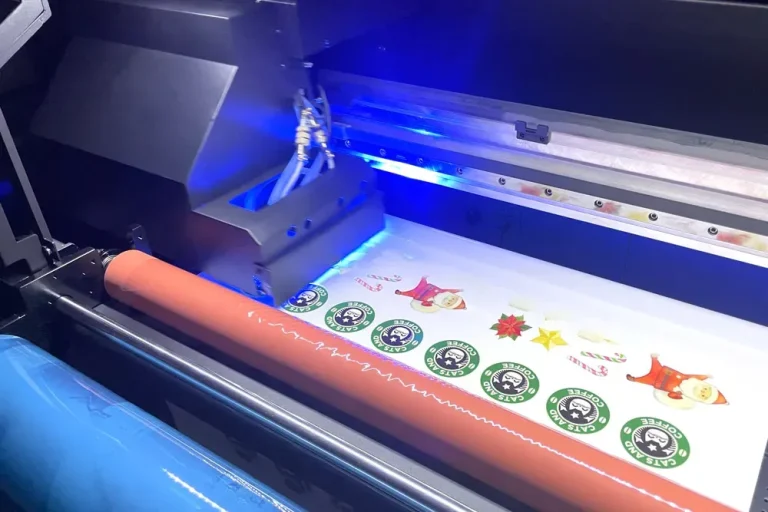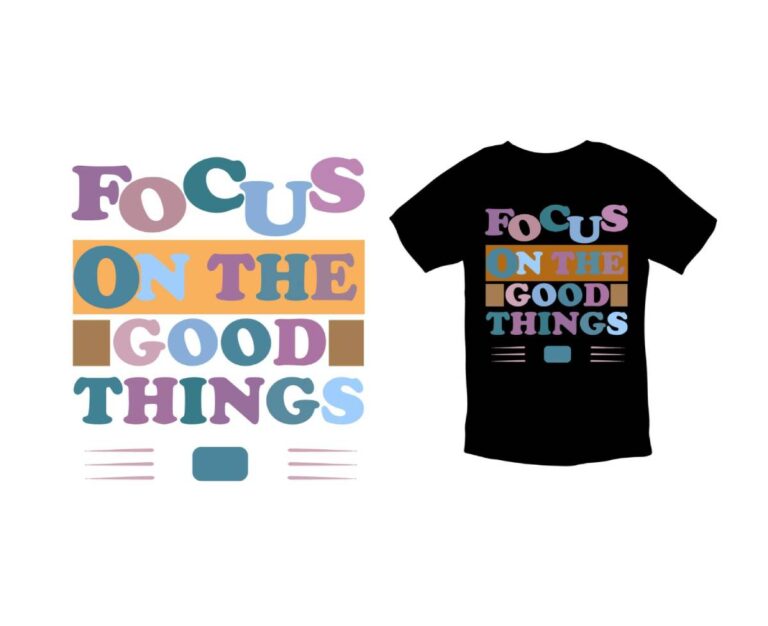DTF vs Screen Printing: Which Method is Best for You?
In the vibrant world of custom apparel and textiles, understanding the nuances of DTF vs Screen Printing is essential for businesses aiming to thrive. Direct-to-Film (DTF) printing represents a modern approach that excels in flexibility, allowing for high-resolution designs to be easily transferred to various fabrics. Conversely, screen printing is a time-tested method known for its durability and vibrant color production, making it ideal for bulk orders. As companies weigh their options, exploring the differences between these printing methods—including aspects like cost-effectiveness and quality—can lead to more informed decisions. Whether you’re launching a small business or scaling up production, knowing the merits of DTF printing compared to screen printing will help position your brand competitively in the market.
When it comes to creating custom designs on textiles, the debate often centers around Direct-to-Film (DTF) technology and traditional mesh printing. Each method serves unique market needs; DTF is praised for its innovative approach to design transfer, while mesh printing continues to dominate for larger production volumes due to its reliability. By exploring these printing techniques, businesses can navigate the complexities of custom apparel creation and better understand their impact on production efficiency and design versatility. As the industry evolves, staying informed about printing options becomes increasingly vital for those looking to stand out in a saturated marketplace.
Comparing DTF and Screen Printing: An Overview
When it comes to custom apparel production, businesses must understand the nuances between DTF (Direct-to-Film) printing and screen printing. Each method serves unique purposes and caters to different demands within the market. DTF printing, a modern technological advancement, utilizes heat and pressure to transfer high-resolution designs from film to fabric, which allows for intricate details and vibrant colors. In contrast, traditional screen printing involves pushing ink through a stencil onto the material, which is ideal for bold and simple designs. By delving into these differences, businesses can make informed decisions that align with their production needs.
In the current printing landscape, choosing the right method is crucial not just for the quality of the finished product but also for the overall efficiency and cost-effectiveness of the process. Screen printing is recognized for its strength in large-scale production because it significantly reduces per-unit costs as the volume increases. Meanwhile, DTF printing provides flexibility that can benefit smaller businesses or those looking to experiment with diverse and limited runs. This understanding aligns closely with the objective of providing quality custom apparel that meets client expectations in both aesthetics and durability.
Cost Effectiveness: DTF vs. Screen Printing
Cost considerations are pivotal when evaluating DTF and screen printing methods. Screen printing initial setup costs can be a hindrance for smaller order quantities due to the requirement of creating individual screens for each design. Although it becomes very cost-effective for larger orders, the initial investment can be substantial, resulting in higher per-item costs for smaller batches. Businesses focusing on bulk production often find screen printing advantageous despite these initial hurdles as the costs per unit decline with increased quantities.
Conversely, DTF printing excels in flexibility and lower startup costs, making it an attractive option for companies that require short-run jobs or custom designs. With DTF, there’s no need for extensive setup, allowing for cost savings and faster turnaround times. This aspect is especially favorable as consumer demand shifts toward personalized products, enabling businesses to respond swiftly to market trends without being bogged down by high initial expenditures. Overall, understanding these cost dynamics can help businesses strategize their printing approaches effectively.
Quality and Durability: A Comparative Look
The quality of prints is a primary concern when selecting between DTF and screen printing. Screen printing is often praised for its long-lasting durability; the thick layers of ink result in robust prints that can withstand numerous washes. This makes it particularly appealing for designs that prioritize longevity. However, it does face challenges with fine details, as intricate designs may lose clarity compared to those produced by DTF. Such limitations can be significant when high precision is required in custom designs.
DTF printing, on the other hand, shines when it comes to producing high-quality, detailed images and can effectively replicate complex graphics and photographs. Businesses can enjoy vibrant colors and intricate details that may be difficult to achieve with screen printing. Nevertheless, while DTF prints are also durable, their longevity can depend heavily on the quality of the inks and the transfer process. Therefore, businesses must weigh the type of designs they plan to produce against the quality expectations of their clientele when choosing between these two methods.
Material Versatility in Printing
Material flexibility is another crucial factor to consider when comparing DTF and screen printing. DTF printing can be applied to a diverse range of fabric types, including cotton, polyester, and various blends, making it a versatile choice for custom apparel lines. This adaptability is increasingly important as fashion trends evolve and consumers seek products made from different materials. For businesses aiming to experiment with a variety of textiles, DTF provides a considerable advantage, ensuring product offerings can meet diverse customer preferences.
On the contrary, screen printing can be less accommodating regarding material selection. Screen printers often need to use specific inks for different fabrics, which can complicate production and limit creativity. Consequently, businesses looking to diversify their apparel offerings may find this restrictive. This limitation becomes particularly apparent when exploring new market trends aimed at eco-friendliness and innovative fabrics. Ultimately, understanding material compatibility is essential for businesses that wish to expand their product lines effectively.
Environmental Considerations in Printing Methods
Both DTF and screen printing methods come with environmental considerations that are important for businesses looking to adopt eco-friendly practices. Screen printing has historically faced criticism due to the chemicals used in inks and the impact of waste generated during production. However, many companies are now shifting to more sustainable inks and methods, which align better with current consumer demands for environmentally responsible manufacturing. This pivot demonstrates the industry’s commitment to reducing its ecological footprint.
Similarly, DTF printing is not without its environmental challenges, particularly concerning the plastic films required for transfers. Nonetheless, advances in technology and increased demand for sustainable practices have prompted suppliers to explore alternative materials that are more eco-friendly. This gradual transformation reflects a significant trend in both printing methods towards sustainability, as consumers increasingly favor brands that prioritize environmental responsibility. Businesses must stay informed about these developments to effectively communicate their sustainability efforts to their customers.
Choosing the Right Printing Method for Your Business
Selecting between DTF and screen printing requires careful consideration of various factors specific to a business’s objectives. For companies focusing on large orders, screen printing may still offer the best cost-saving opportunities, making it the go-to method for such needs. In contrast, businesses seeking to cater to a market driven by personalized and custom orders will likely find that DTF printing provides the flexibility and efficiency necessary to meet these demands effectively.
Furthermore, it’s important to assess the complexity of designs and materials utilized. DTF excels in creating intricate, detailed prints that appeal to consumers looking for sophisticated designs. If the business offers a wide array of fabric types or seeks to respond to the latest trends in fashion while maintaining a competitive edge, embracing DTF might be the most strategic decision. Ultimately, understanding the nuances of each method allows businesses to align their choices with market demands and customer expectations.
Frequently Asked Questions
What are the main differences between DTF printing and screen printing?
DTF printing and screen printing differ primarily in their process and application. Screen printing uses stencils to apply thick layers of ink, making it ideal for large orders with simple designs. In contrast, DTF printing utilizes a transfer film to achieve high-resolution, detailed images that can be applied to various fabrics, making it suitable for smaller batches and intricate designs.
Is DTF printing more cost-effective than screen printing for small orders?
Yes, DTF printing is generally more cost-effective for small orders because it requires less setup than screen printing, which has higher costs associated with screen preparation. This flexibility allows businesses to print lower quantities without significant expenses, making DTF particularly appealing for personalized or custom apparel.
How does the durability of DTF printing compare to screen printing?
Screen printing is known for its exceptional durability due to the thick ink layers that can withstand many washes. However, high-quality DTF prints can also be durable, producing vibrant images. While both methods can create lasting products, screen printing typically edge out in longevity.
What types of materials can be used with DTF printing compared to screen printing?
DTF printing is highly versatile and can be applied to various fabrics, including cotton, polyester, and blends. This flexibility is a significant advantage over screen printing, which often requires specific inks for different textiles, limiting material options for businesses.
Are there environmental considerations when comparing DTF printing and screen printing?
Both DTF and screen printing methods have environmental impacts, mainly due to the inks and materials used. Screen printing has traditionally faced criticism for harmful chemicals, but many companies now use eco-friendly inks. DTF printing is also evolving, with suppliers exploring sustainable materials, reflecting a growing trend towards environmentally conscious practices in the industry.
Which printing method is better for intricate designs, DTF printing or screen printing?
DTF printing is generally better suited for intricate designs and high-resolution images, as it can replicate fine details effectively. In contrast, screen printing can struggle with complex designs due to the limitations of ink application. Therefore, for detailed and vibrant designs, DTF printing is often the preferred choice.
| Feature | Screen Printing | Direct-to-Film (DTF) Printing |
|---|---|---|
| Setup Process | Requires multiple screens for different designs thus higher setup time. | Simpler setup without multiple screens, quick changes possible. |
| Cost Effectiveness | Cost-effective for bulk orders but high setup costs for small runs. | More economical for small to medium orders with lower setup costs. |
| Quality of Prints | Durable prints but limited detail in intricate designs. | High-resolution, detailed prints capable of reproducing photographs. |
| Material Versatility | Requires specific inks for various fabrics, limiting versatility. | Works on a wide range of materials, including blends and various fabrics. |
| Environmental Impact | Criticized for harmful chemicals, but shifting towards eco-friendly practices. | Technology improving to reduce environmental concerns, but plastic transfer films remain a point of contention. |
| Current Trends | Strong for bulk production and durability needs. | Rising in popularity for customization and quick production turns. |
| Ideal Use Cases | Best for large quantities and durable designs. | Perfect for smaller batches and detailed custom designs. |
Summary
DTF vs Screen Printing involves a crucial choice for businesses in the custom apparel industry. While DTF printing speaks to those in need of flexibility, speed, and intricate detailing, screen printing remains a go-to for bulk orders emphasizing durability. These methodologies offer differing costs, quality, and environmental considerations that can significantly influence business operations. Understanding the distinct advantages of each method allows for optimized production choices tailored to meet customer demands and market trends effectively.






